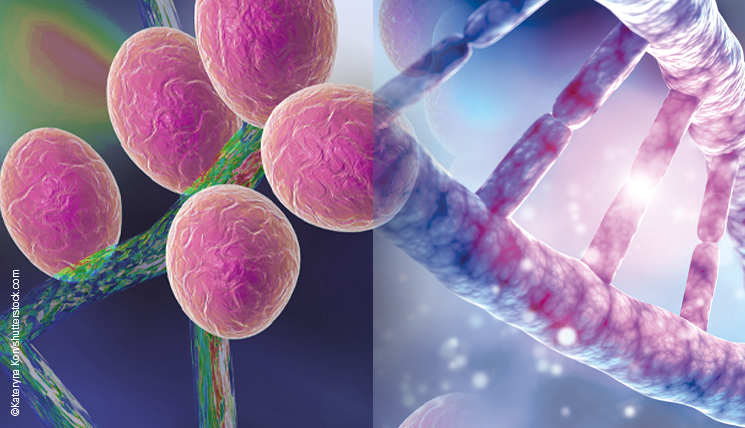Guest contribution:
 Article series on the subject of state-of-the-art mycology in dermatology,
Article series on the subject of state-of-the-art mycology in dermatology,
9th article
by Prof Hans-Jürgen Tietz, Director of the Institute of Fungal Diseases in Berlin, Germany
Recently, a patient said goodbye to me with the words: “If we are not successful with the culture, then I want the genetic test. My health insurance company agreed to pay for it”. This sounded like a declaration of war by the 75-year-old to the fungus. A lady of the same age told us: “I have not been able to do my favourite thing lately, travelling. For that I can now afford a PCR for my nails”. A 16-year-old appeared with the following wish: “It’s not a fungus, my doctor thinks it’s a fungus. I would like to clarify this by PCR “.
It was actually not mycosis, as the clinical picture already showed, but onychogryposis, also known as ram’s horn nails. The nail disease defined by Rudolf Virchow as onychogryposis, which is in fact most often confused with onychomycosis, is an immense keratinisation of the nails with often abnormal deformations. The nails are so hard that they can hardly be cut, unlike onychomycosis, where the nails can be thickened but are soft and porous. The young man nevertheless insisted on a PCR: “I want to know exactly. Like at our school for the exclusion of corona”. The result was negative but all the same useful. For sceptics, PCR is the strongest microbiological argument for and against mycosis. “I am not contagious”, was what he consoled himself with.
Around 50% of nail changes are not caused by fungi. Although onychomycosis is the most common nail disease, it is not the only one, which only a few patients are aware of. Toxic-irritant eczema (beware of cosmetic nail varnishes), isolated nail psoriasis (antihypertensive drugs) and other non-infectious dermatoses (lichen ruber) also cause a lot of stress. A small information brochure on differential nail diagnostics from our practice has recently been published under the title „Nagelveränderungen“ [Nail changes].
As our patient examples show, we have somehow all become epidemiologists. It feels like every case history is now also a corona conversation. Terms like FDA, or the company behind Biontech, are no longer foreign to anyone, nor are the possibilities of PCR. The other young man also had the desire to find out which pathogen had been plaguing him for so long. It was a therapy-refractory „Thailand fungus“ called T. mentagrophytes type VII, which has enriched the spectrum of pathogens in mycology just as much as T. erinacei or T. benhamiae, which became endemic even before corona. The virus has given the type VII pathogen an additional boost, for example through the closure of brothels, which has led to an increase in illegal prostitution. It is also the first dermatophyte to be included in the category of sexually transmitted diseases (STD).
So there is a lot that is new in mycology, from the spectrum of pathogens to diagnostics and therapy. As a long-term mycologist, I am proud to be able to offer one of the greatest achievements in mycology in recent years – PCR – in my consultations. The patients are also convinced, not least thanks to the knowledge boost from corona. Mycological diagnostics have never been so precise and fast, PCR is on everyone’s lips, even with fungi. Who would have thought it! I’m sure PCR won’t let us down in the upcoming quality assessment scheme either. Rumour has it that a difficult pathogen is involved. So it remains exciting, in every respect.
Best wishes,
Hans-Jürgen Tietz
The articles under the rubric “Guest contribution” only reflect the views of the respective authors. Responsibility for the legality and content of the articles lies solely with the authors. EUROIMMUN does not assume liability for the completeness, accuracy and currentness of the information provided.


